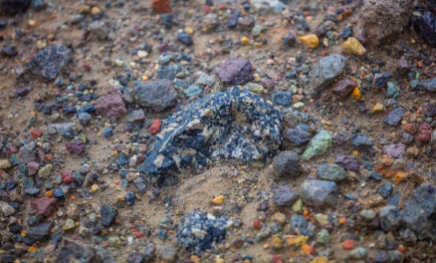The fog comes off the water and goes up the side of the volcano, thick in the gullies and breaking over the shadows of the ridges. When the fog lifts, the beach is exposed. I could spend the precious day photographing drifted things: the bottle where the white sauce inside has gone solid, the buoys, the Coke bottle, the mustard spout.
If I sit, flies gather. They settle on anything not breccia or muddy ash. These flies would love me to be a dead thing washed-up. I could be a garden, the ash around my body turned black with community. It’s possible they are eating crumbs of galley scone off my jacket and pants. It’s possible they have learned to digest drift-plastic.
The volcano last blew eight years ago. This could be yesterday, but the ocean has already brought the island everything civilization needs, unless the volcano decides otherwise, unless this layer of ash pancake isn’t the last. The volcano is a round island. There are no coves, no shelter. Every inch but the caldera is exposed and takes up a collection from the sea. Great tree trunks are driven up far from today’s surf, and the ash tries to steal my boots into hidden pockets the size of beachballs.
In the beginning, the world is coarse as sandpaper and puts holes in our pants so we sit on our backpacks. We count all the things we find. When we leave in the skiff, the sea is calm, the fog thick like ash clung to our boots. The island fades from existence on our left, and on our right, wild sea and at some point the red beacon of the ship where there will be beds and dinner and coffee and engines to take us to the next island.
—Thanks to the US Fish and Wildlife Service; UA Museum of the North Entomology Collection (Kasatochi, 2016)






















